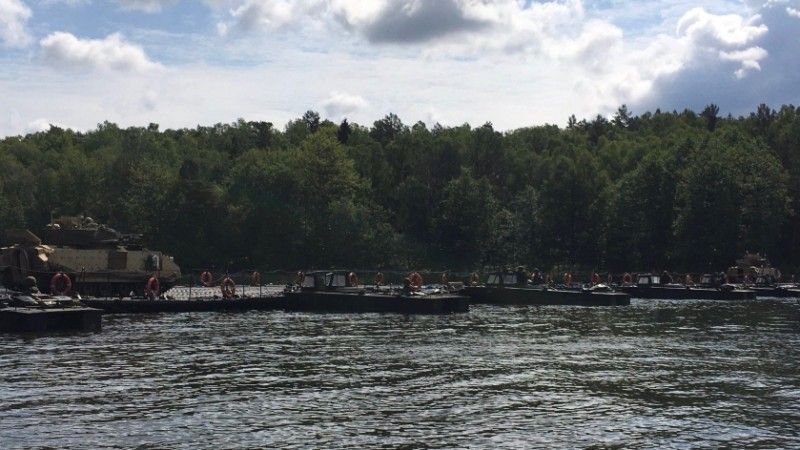New Pontoon Bridges for the Polish Armed Forces: Acquisition Expected Soon

The Armament Inspectorate has finalized the assessment of requests submitted by the potential bidders, within the framework of the Daglezja-P pontoon bridges procurement procedure, pursued by the Polish military. All three bidders may pass to the next stage of the procurement process. The new system is to replace the currently operated, obsolete, PP-64 Wstęga systems.
According to Major Krzysztof Płatek, spokesman for the Armament Inspectorate of the Ministry of Defence, requests for participation in the proceedings submitted by three entities involved have been approved, meeting the condition of the procurement process. Currently, the invitation to place the preliminary offers is being drafted.
Within the framework of the tendering procedure launched in January this year, three bidders submitted their requests to participate: Constructions Industrielles de la Méditerranée – CNIM Systémes Industriels; consortium formed by H. Cegielski-Poznań S.A., CEFA SAS, and Polska Grupa Zbrojeniowa S.A.; Griffin Group S.A. Defence Sp.k. The latter bidder submitted an appeal to the head of the National Chamber of Appeals, concerning the qualification procedure. According to Płatek, the appeal was withdrawn while the Chamber’s proceedings were cancelled. Thus, the Armament Inspectorate can still consider the bids submitted by all three entities.
When it comes to the bridges offered, the H. Cegielski-Poznań S.A., CEFA SAS, and Polska Grupa Zbrojeniowa S.A. consortium offers the SRB System (already showcased at MSPO); Griffin Group offers its M3/IRB system; Constructions Industrielles de la Méditerranée – CNIM Systémes Industriels - would most probably offer the Upgraded Motorized Floating Bridge system.
The Daglezja-P pontoon inventory is to make it possible to create bridge and ferry crossings making it possible to overcome water obstacles by MLC70 tracked vehicles and MLC96 wheeled platforms, including tank carrier trailers. The system is to be capable of overcoming water obstacles with 1.5 m/s current speed and with depths of more than 1 meter. A single set of pontoon bridge system should make it possible to cross an obstacle that would be at least 100 meters wide or to create two MLC 70/96 capacity ferries.
PP-64 Wstęga bridges, despite coming from the 1960s, are still being heavily used, also during the allied exercises, such as the Defender-Europe 20 Plus for instance. However, these assets are obsolete, with limited payload and demanding workload and maintenance involved, when compared to modern, highly-automated solutions that can be deployed rapidly.
Alongside the exercise use, the PP-64 system is also frequently employed in crisis-response scenarios. The equipment has been deployed, currently, to Warsaw, to respond to the “Czajka” wastewater treatment plant failure. According to Lt. Col. Marek Pawlak, spokesman for the General Command of the Armed Forces, a mixed “C” type Wstęga has been used in Warsaw. The operations involve 2.5 pontoon bridge sets, including the reserve elements, should the bridge blocks be damaged over the three months of use.
